堆作为必须掌握的数据结构之一,在众多场景中也得到了广泛的应用。
比较典型的,如java中的优先队列PriorityQueue、算法中的TOP-K问题、最短路径Dijkstra算法等,在这些经典应用中堆都担任着灵魂般的角色。
理论基础
binary heap
再一起回忆一下堆的一个性质:堆总是一棵完全二叉树。有些文章中也将堆称为二叉堆(binary heap)。
在堆中,再根据堆顶点为最大值与最小值,分为大顶堆与小顶堆。


新增一个元素,需要进行sift-up操作,其时间复杂度为O(logN)
构造二叉堆,有两种方式:
- 一种是比较简单的方式:遍历每个元素进行sift-up,其时间复杂度为O(N*logN)
- 另一种是将元素以完全二叉树进行存储,遍历每个非叶子节点自下而上构建子堆,其时间负载度为O(N)
删除堆顶元素,需要对堆末尾元素进行sift-down,其时间复杂度也为O(logN)。
堆排序的过程是在构建好堆后再逐个删除堆顶元素,其时间复杂度O(N+(N-1)*logN),约为O(NlogN)
堆排序整体运行过程动画如下:

d-ary deap
除了二叉堆外,还有三叉堆、四叉堆、五叉堆这些N叉堆,即维基百科中的d-ary heap。
The d-ary heap or d-heap is a priority queue data structure, a generalization of the binary heap in which the nodes have d children instead of 2.

N叉堆与二叉堆进行对比,由于N叉堆树的高度更低,上推(sift-up)过程的时间复杂度是二叉堆的O(logN2)倍,即新增元素时则会更快。
删除堆顶元素时进行sift-down操作,时间复杂度为O(N * log s / log N)。(N为维度,s为堆中节点个数)
在N叉堆中,四叉堆由于综合性能相对稳定在N叉堆中脱颖而出。
测试数据可参考:https://vearne.cc/archives/39627
GO中的应用(time.ticker源码分析)
在有了理论基础后,再看下四叉堆在GO中的应用-timer(定时任务)。
ticker用法
在go项目中,可以使用go自带的time.ticker进行简单的定时任务。示例代码如下:
// 新建一个ticker,定设置周期为1秒
ticker := time.NewTicker(time.Second * 3)
// 在一个协程接收ticker的channel回调
go func() {
for {
<-ticker.C
// 周期到达后,输出当前时间
fmt.Println("tick-->", time.Now().String())
}
}()
time.Sleep(time.Hour)
输出示例为:
……
tick--> 2023-10-08 21:01:30.1830277 +0800 CST m=+3.009288301
tick--> 2023-10-08 21:01:33.1811243 +0800 CST m=+6.007384901
tick--> 2023-10-08 21:01:36.179331 +0800 CST m=+9.005591601
……
以上一个定时任务代码就完成了
ticker结构
以上简短的代码便完成一个定时任务的功能,再来探究一下它的原理。
一个Ticker由两部分组成:
- 一个接收消息的channel
- 一个runtimeTimer结构体
type Ticker struct {
C <-chan Time // The channel on which the ticks are delivered.
r runtimeTimer
}
type runtimeTimer struct {
pp uintptr
when int64
period int64
f func(any, uintptr) // NOTE: must not be closure
arg any
seq uintptr
nextwhen int64
status uint32
}
从NewTicker方法入手:
func NewTicker(d Duration) *Ticker {
if d <= 0 {
panic(errors.New("non-positive interval for NewTicker"))
}
c := make(chan Time, 1)
t := &Ticker{
C: c,
r: runtimeTimer{
when: when(d), //下次触发时间
period: int64(d),//运行周期
f: sendTime,//触发时执行的动作
arg: c,
},
}
startTimer(&t.r)//启动Timer
return t
}
// sendTime does a non-blocking send of the current time on c.
func sendTime(c any, seq uintptr) {
select {
case c.(chan Time) <- Now()://将当前时间发送给等待的channel
default://channel缓存区满了,不执行任何操作
}
}
以上代码在NewTicker方法中创建了一个Ticker,并调用了startTimer方法。
且runtimeTimer与一个ticker是一对一的关系,用一个堆来存储所有的定时任务,则一个ticker是一个节点。
startTimer方法
startTimer在time包下无法找到实现代码,需要在go源码的runtime下查看。

如上图所示,源码在src/runtime/time.go文件中。
// startTimer adds t to the timer heap.
//
//go:linkname startTimer time.startTimer
func startTimer(t *timer) {
if raceenabled {
racerelease(unsafe.Pointer(t))
}
addtimer(t)
}
// Note: this changes some unsynchronized operations to synchronized operations
// addtimer adds a timer to the current P.
// This should only be called with a newly created timer.
// That avoids the risk of changing the when field of a timer in some P's heap,
// which could cause the heap to become unsorted.
func addtimer(t *timer) {
// when must be positive. A negative value will cause runtimer to
// overflow during its delta calculation and never expire other runtime
// timers. Zero will cause checkTimers to fail to notice the timer.
if t.when <= 0 {
throw("timer when must be positive")
}
if t.period < 0 {
throw("timer period must be non-negative")
}
if t.status.Load() != timerNoStatus {
throw("addtimer called with initialized timer")
}
t.status.Store(timerWaiting)
when := t.when
// Disable preemption while using pp to avoid changing another P's heap.
mp := acquirem()
pp := getg().m.p.ptr()
lock(&pp.timersLock)
cleantimers(pp)
doaddtimer(pp, t)
unlock(&pp.timersLock)
wakeNetPoller(when)
releasem(mp)
}
addtimer方法为关键方法。看懂addtimer的整体方法需要对go中的GMP模型有一定的了解。
G(gorountine协程),M(thread线程),P(processor处理器)

咱们这里仅看主流程,直接看doaddtimer方法。
doaddtimer方法(新增节点)
// doaddtimer adds t to the current P's heap.
// The caller must have locked the timers for pp.
func doaddtimer(pp *p, t *timer) {
// Timers rely on the network poller, so make sure the poller
// has started.
if netpollInited.Load() == 0 {
// netpool如未初始化则进行初始化
netpollGenericInit()
}
if t.pp != 0 {
throw("doaddtimer: P already set in timer")
}
// 给timer绑定p
t.pp.set(pp)
i := len(pp.timers)
// 将此timer添加到p的timer集合中,放到堆的末尾
pp.timers = append(pp.timers, t)
// 堆内新增了元素,进行上推操作在保持堆的特性
siftupTimer(pp.timers, i)
if t == pp.timers[0] {
pp.timer0When.Store(t.when)
}
// p的timer计数器加1
pp.numTimers.Add(1)
}
再来详细学习下4叉堆的siftup具体是如何操作的。
siftupTimer方法中的t为堆的所有元素,i为要进行siftup元素的索引,也就是新增的元素索引。
siftupTimer方法如下:
func siftupTimer(t []*timer, i int) int {
// 判断新增元素的正确性
if i >= len(t) {
badTimer()
}
// 获取出新增元素的具体运行时间
when := t[i].when
if when <= 0 {
badTimer()
}
// 新增元素的值
tmp := t[i]
for i > 0 {
// 获取出新增元素的父节点索引,四叉堆时父节点索引为(i-1)/4
p := (i - 1) / 4 // parent
if when >= t[p].when {
// 新增元素的运行时间晚于父节点,则无需继续siftup
break
}
// 将原父节点位置往下降一级
t[i] = t[p]
// 新增元素的位置往上提升一级
i = p
}
if tmp != t[i] {
// 新增元素的值在最后确定了位置后才赋值,而不是每次都进行交换
t[i] = tmp
}
return i
}
runtimer方法(执行/删除节点)
当timer堆中维护好后,就可以准备执行timer堆中的timer了。
此过程为持续从堆顶取出timer,判断timer是否达到了执行的条件(时间、状态),如果条件满足就执行此timer。
执行timer的方法为time中的runtimer方法,执行时主要关注runOneTimer方法。源码如下:
func runtimer(pp *p, now int64) int64 {
for {
// 获取出当前p的堆顶timer
t := pp.timers[0]
if t.pp.ptr() != pp {
throw("runtimer: bad p")
}
// 对堆顶timer的状态进行判断
switch s := t.status.Load(); s {
case timerWaiting:
if t.when > now {
// Not ready to run.
return t.when
}
if !t.status.CompareAndSwap(s, timerRunning) {
// 已在运行,不重复运行
continue
}
// Note that runOneTimer may temporarily unlock
// pp.timersLock.
runOneTimer(pp, t, now)
return 0
case timerDeleted:
if !t.status.CompareAndSwap(s, timerRemoving) {
continue
}
dodeltimer0(pp)
if !t.status.CompareAndSwap(timerRemoving, timerRemoved) {
badTimer()
}
pp.deletedTimers.Add(-1)
if len(pp.timers) == 0 {
return -1
}
case timerModifiedEarlier, timerModifiedLater:
if !t.status.CompareAndSwap(s, timerMoving) {
continue
}
t.when = t.nextwhen
dodeltimer0(pp)
doaddtimer(pp, t)
if !t.status.CompareAndSwap(timerMoving, timerWaiting) {
badTimer()
}
case timerModifying:
// Wait for modification to complete.
osyield()
case timerNoStatus, timerRemoved:
// Should not see a new or inactive timer on the heap.
badTimer()
case timerRunning, timerRemoving, timerMoving:
// These should only be set when timers are locked,
// and we didn't do it.
badTimer()
default:
badTimer()
}
}
}
// runOneTimer runs a single timer.
// The caller must have locked the timers for pp.
// This will temporarily unlock the timers while running the timer function.
//
//go:systemstack
func runOneTimer(pp *p, t *timer, now int64) {
if raceenabled {
ppcur := getg().m.p.ptr()
if ppcur.timerRaceCtx == 0 {
ppcur.timerRaceCtx = racegostart(abi.FuncPCABIInternal(runtimer) + sys.PCQuantum)
}
raceacquirectx(ppcur.timerRaceCtx, unsafe.Pointer(t))
}
// 取出timer中的function和参数
f := t.f
arg := t.arg
seq := t.seq
if t.period > 0 {
// tick类型的timer,以实际运行时间和固定周期计算出下次运行时间
// Leave in heap but adjust next time to fire.
delta := t.when - now
t.when += t.period * (1 + -delta/t.period)
if t.when < 0 { // check for overflow.
t.when = maxWhen
}
// siftdown堆顶节点,重新调整堆
siftdownTimer(pp.timers, 0)
if !t.status.CompareAndSwap(timerRunning, timerWaiting) {
badTimer()
}
updateTimer0When(pp)
} else {
// 非tick类型的timer,执行删除
// Remove from heap.
dodeltimer0(pp)
if !t.status.CompareAndSwap(timerRunning, timerNoStatus) {
badTimer()
}
}
if raceenabled {
// Temporarily use the current P's racectx for g0.
gp := getg()
if gp.racectx != 0 {
throw("runOneTimer: unexpected racectx")
}
gp.racectx = gp.m.p.ptr().timerRaceCtx
}
unlock(&pp.timersLock)
// 执行timer的function和参数
f(arg, seq)
lock(&pp.timersLock)
if raceenabled {
gp := getg()
gp.racectx = 0
}
}
在删除堆顶节点时执行的是siftdownTimer方法。其源码如下:
// siftdownTimer puts the timer at position i in the right place
// in the heap by moving it down toward the bottom of the heap.
func siftdownTimer(t []*timer, i int) {
n := len(t)
if i >= n {
badTimer()
}
// 获取出要调整节点的执行时间
when := t[i].when
if when <= 0 {
badTimer()
}
tmp := t[i]
for {
// c为调整节点的最左子节点,从左往右第1个
c := i*4 + 1 // left child
// c3为调整节点的中间节点,从左往右第3个
c3 := c + 2 // mid child
if c >= n {
break
}
// 最左子节点的下次执行时间
w := t[c].when
// 左边第2个节点的执行时间比最左子节点执行时间更先执行
if c+1 < n && t[c+1].when < w {
// 左边部分timer排序交换,最先执行的排左边
w = t[c+1].when
c++
}
// 判断中间节点是否存在
if c3 < n {
// 中间子节点的timer执行时间
w3 := t[c3].when
if c3+1 < n && t[c3+1].when < w3 {
// 同上,将最先执行的往左排
w3 = t[c3+1].when
c3++
}
// 子节点整体做对比,左侧与右侧对比
if w3 < w {
// 将最先执行的放在左边
w = w3
c = c3
}
}
if w >= when {
// 堆已调整完毕
break
}
// 将最左的子节点向上升一级
t[i] = t[c]
// 原i向下降一级
i = c
}
if tmp != t[i] {
// 将siftdown节点调整到最终确定的位置
t[i] = tmp
}
}
某一个timer运行时,会判断此timer是否为周期性timer,周期性timer会将堆顶节点进行移除,再计算出下次执行时间,并使用sift-down将此timer下沉到适当的位置,以整体满足堆的特性。
dodeltimer0(临时性timer)
从runOneTimer方法中可以看到有两个分支,分别为:
- timer有period(周期性定时任务类型)
- timer无period(仅计时类型)
前面看的siftdownTimer是周期性定时任务会执行的方法。如果为临时性定时任务,如倒计时或time.sleep场景中,则最终运行的为dodeltimer0方法。
源码如下:
// dodeltimer0 removes timer 0 from the current P's heap.
// We are locked on the P when this is called.
// It reports whether it saw no problems due to races.
// The caller must have locked the timers for pp.
func dodeltimer0(pp *p) {
if t := pp.timers[0]; t.pp.ptr() != pp {
throw("dodeltimer0: wrong P")
} else {
t.pp = 0
}
// 获取到堆中的最后一个节点
last := len(pp.timers) - 1
if last > 0 {
// 最后一个节点放到堆顶
pp.timers[0] = pp.timers[last]
}
// 删除堆中的原末尾节点
pp.timers[last] = nil
pp.timers = pp.timers[:last]
if last > 0 {
// 对放到堆顶的原末尾节点进行siftdown操作
siftdownTimer(pp.timers, 0)
}
// 更新timer集合
updateTimer0When(pp)
n := pp.numTimers.Add(-1)
if n == 0 {
// If there are no timers, then clearly none are modified.
pp.timerModifiedEarliest.Store(0)
}
}
从源码可以看出,当临时性timer触发后会将此节点删除不会再次入堆。这个过程咱们所了解的常规堆排序的过程是一致的,只是这里用的是四叉堆堆排序中用的是二叉堆。
proc.checkTimers(运行检测)
前面所提到的持续从堆顶取timer,并判断是否满足执行条件的步骤在proc.checkTimers方法中,也就是它才是timer执行的入口。此方法的上层调度可通过跟踪源码查看到,后期再详细深入探究。
timer与robfig/cron对比
由于参与的GO项目中有常看到另一个框架https://github.com/robfig/cron,看着源码不太多就浅浅看了下,总结出以下几点:
- cron是基于timer开发的,底层内部仍是使用的timer
- cron支持的任务最小周期为秒,timer的最小周期无限制
- cron中的某一任务是可能并行运行的,而timer.tick中的同一任务不会出现同时运行的情况
比较关键的点为第3点,具体选择时看具体的应用场景
总结
- 在数据量不太大的情况下,四叉堆的综合性能比二叉堆更优
- GO中time.timer和time.tick是使用四叉堆实现的
- time.tick的任务每次运行后会重新入堆,time.timer的任务每次运行后会从堆顶删除

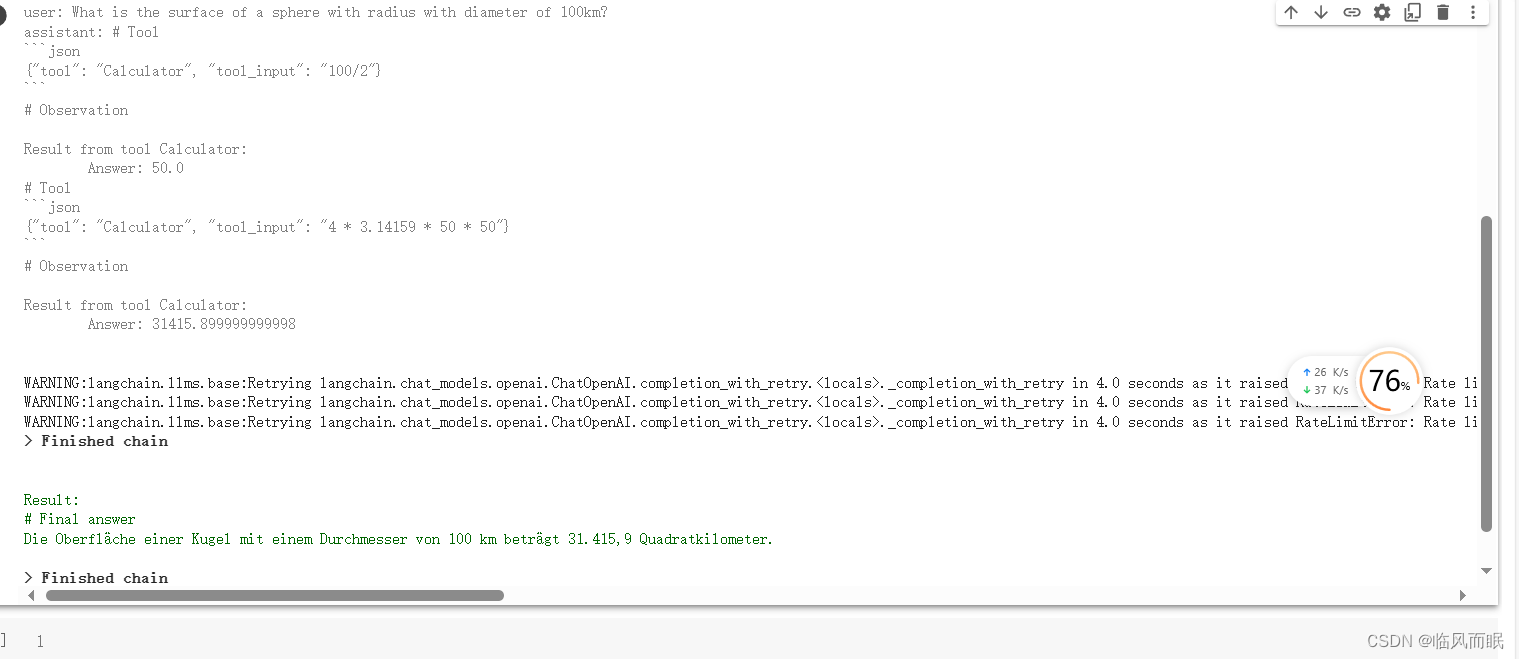





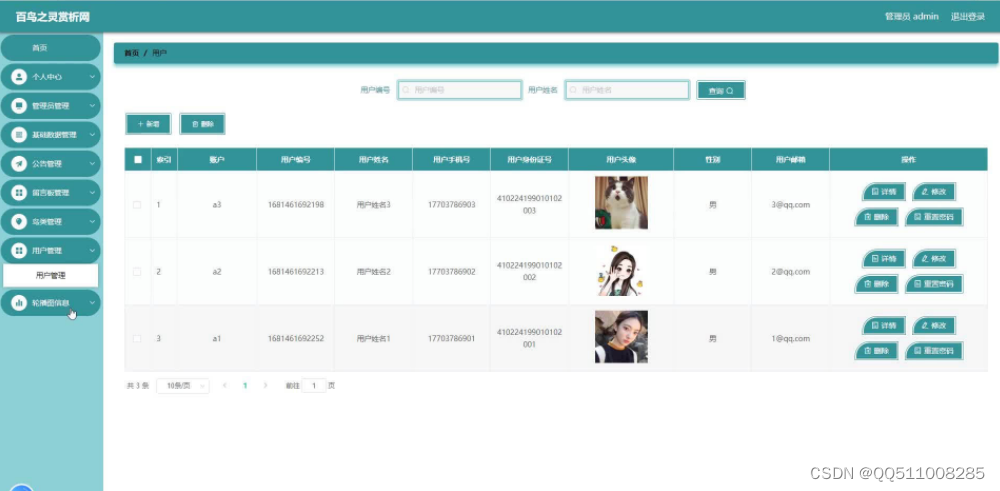


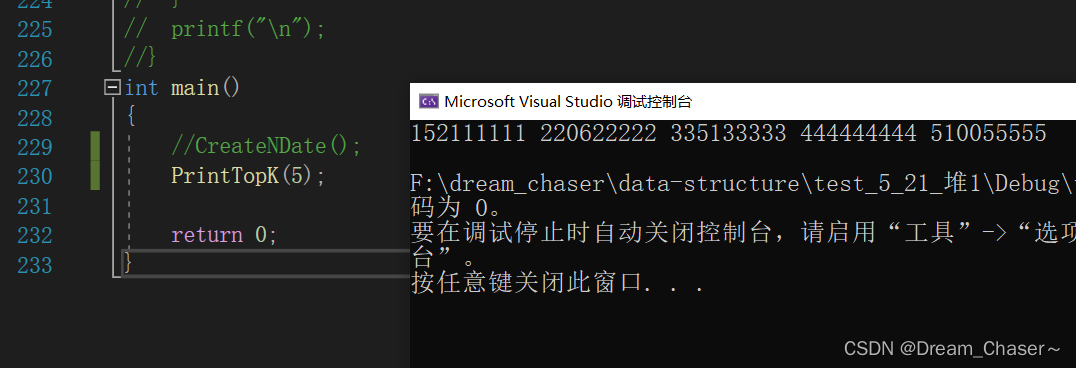
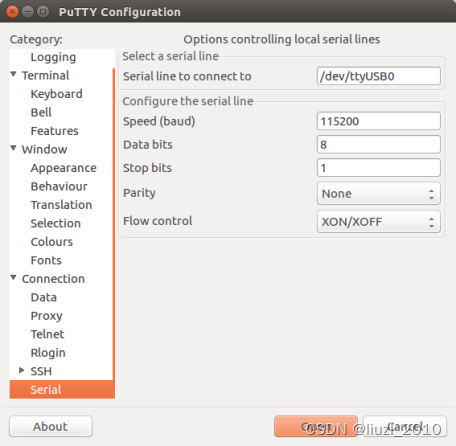
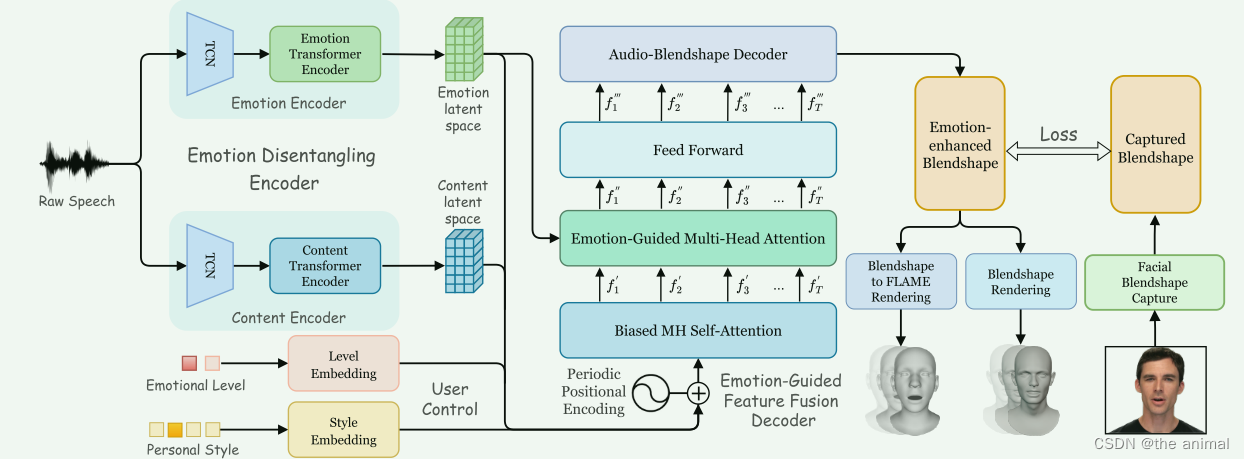
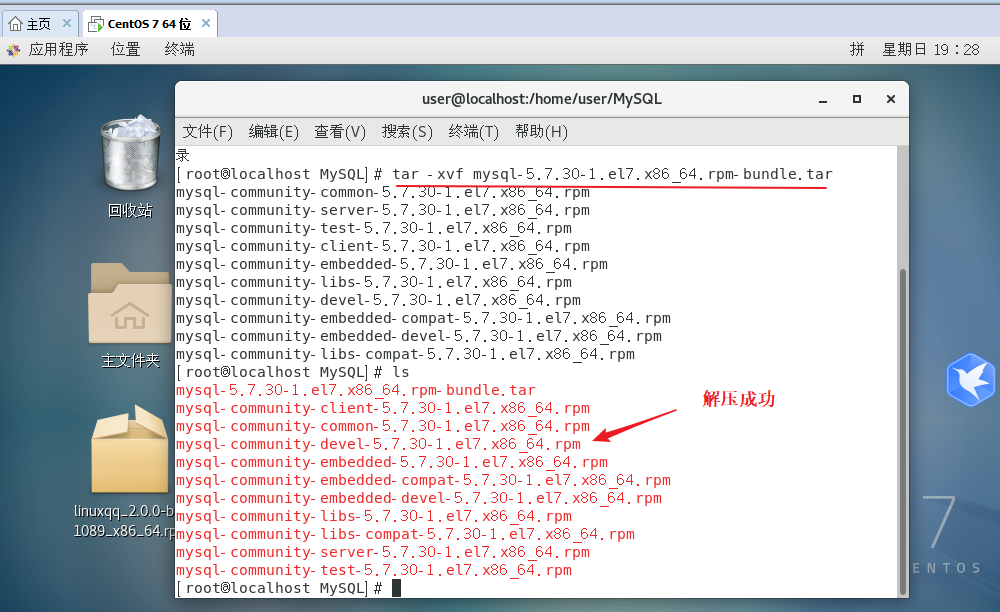




![[BigData:Hadoop]:安装部署篇](https://img-blog.csdnimg.cn/4434177eac0d47449b9d78065899728b.png)